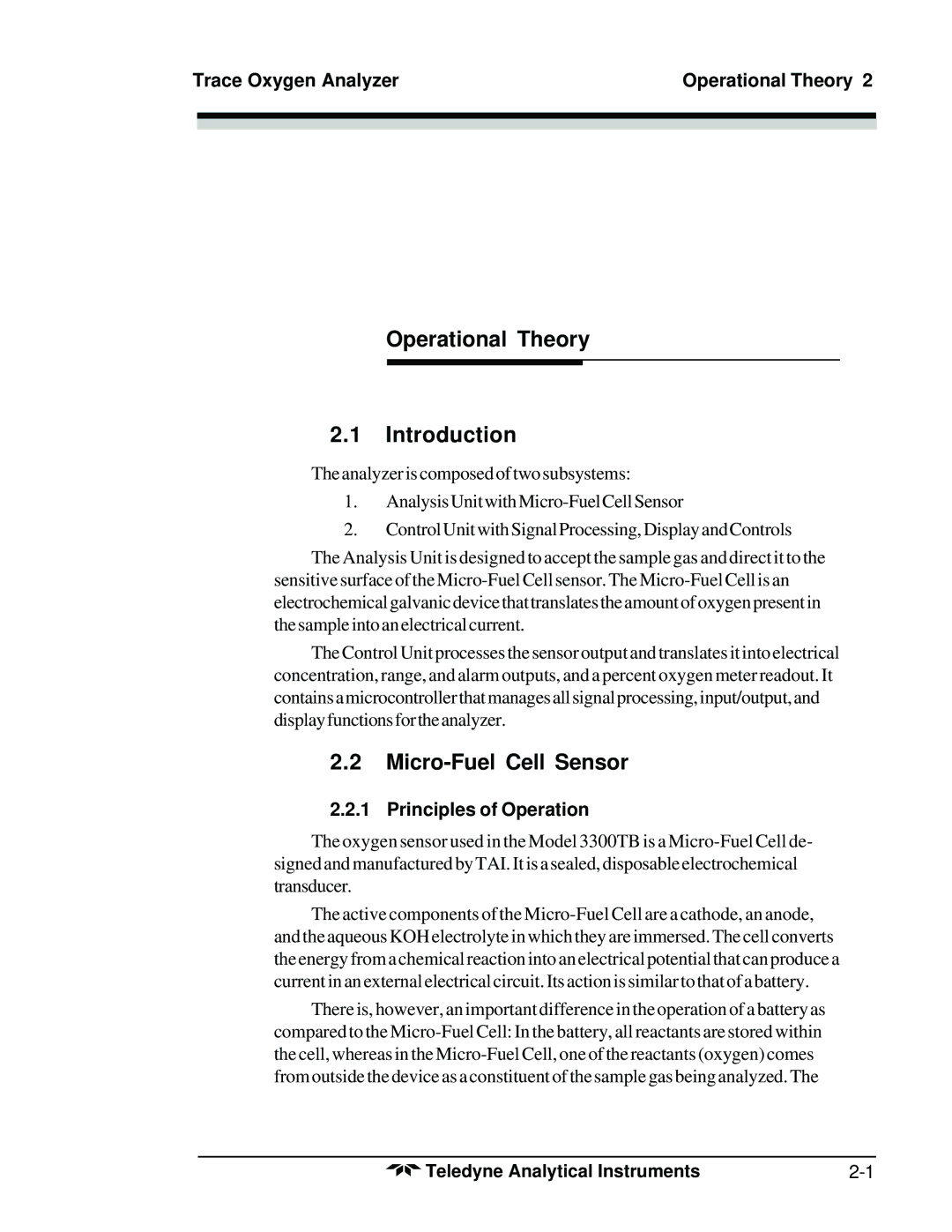
Trace Oxygen Analyzer | Operational Theory 2 | |
|
|
|
|
|
|
|
|
|
Operational Theory
2.1Introduction
The analyzer is composed of two subsystems:
1.Analysis Unit with
2.Control Unit with Signal Processing, Display and Controls
The Analysis Unit is designed to accept the sample gas and direct it to the sensitive surface of the
The Control Unit processes the sensor output and translates it into electrical concentration, range, and alarm outputs, and a percent oxygen meter readout. It contains a microcontroller that manages all signal processing, input/output, and display functions for the analyzer.
2.2Micro-Fuel Cell Sensor
2.2.1 Principles of Operation
The oxygen sensor used in the Model 3300TB is a
The active components of the
There is, however, an important difference in the operation of a battery as compared to the
Teledyne Analytical Instruments |
